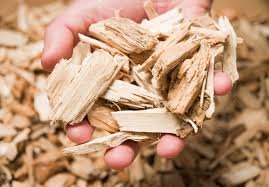- Brescia, Via fratelli Ugoni, 32 - 25126 Italy
- +39 030 25 59 291
- info@avogadroenergy.com
- +39 351 89 84 188
What are the properties of biomass fuel and how do they affect combustion?
Biomass fuel properties
What are the properties of biomass fuel and how do they affect combustion?

The properties of biomass fuel—such as fuel type, physical characteristics, and chemical composition—affect the entire biomass utilization process, including fuel supply, the combustion system, and solid/gaseous emissions. Biomass fuel quality varies widely depending on the biomass type and any pre-treatments applied. For example, the moisture content of fuel fed to the furnace can range from 25% to 60% by weight (bark, sawmill by-products) or drop below 10% by weight (pellets, dry wood-processing residues). Likewise, ash sintering temperatures of biomass fuels span a wide range (800–1700 °C), and particle shapes and sizes can vary greatly. Fuel quality can be influenced and improved by suitable pre-treatment technologies, but this increases costs.
Below are specific properties of solid fuels and how they influence combustion:
- Moisture content: influences storage life, dry matter losses, lower heating value, self-ignition, and plant design.
- Lower and higher heating values (LHV/HHV): affect fuel utilization and plant design.
- Volatile matter: influences thermal decomposition behavior.
- Ash content: affects dust emissions, ash handling, ash use/disposal, and combustion technology.
- Ash melting behavior: affects operational safety, combustion technology, process control systems, and hard deposit formation.
The fuel type influences the combustion process through various characteristics—mainly fuel composition, volatile/char (fixed carbon) content, thermal behavior, density, porosity, size, and active surface area. Biomass generally has a high volatile content and low char compared to coal, making it a highly reactive fuel. However, volatile content varies among biomass fuels and affects their thermal behavior. A fuel’s thermal behavior is also influenced by different chemical structures and bonds present in different biomass types, resulting in significantly different devolatilization behavior as a function of temperature. Nevertheless, similar thermal behavior can often be observed across different wood species.
The density of biomass fuels varies greatly, with significant differences between hardwoods and softwoods. Hardwoods (e.g., birch) have higher density, which affects the ratio between combustion chamber volume and energy input, as well as combustion characteristics. Fuel porosity influences fuel reactivity (mass loss per unit time) and thus devolatilization behavior. Fuel size is a key variable in large-scale biomass combustion applications, especially where fuel particles can be entrained into the flue gas, as in pulverized fuel combustion. Smaller fuel particles require shorter residence time in the combustion chamber. Fuel homogeneity is also important: greater homogeneity—improving as fuel size decreases—allows better process control. Finally, the fuel’s active surface area influences its reactivity.



.jpg)